From where did he get the extraordinary amount of money to buy the world’s most expensive painting? For a while, the world was left in astonishment after Leonardo da Vinci’s “Salvator Mundi” – dating back to 1500 – was sold to a mysterious buyer who splashed a whopping US$450.3 million. People thought it must have been some wealthy Chinese art collectors.
It is one of fewer than 20 authenticated da Vinci paintings in existence, although initial rumours had it that the masterpiece was actually – a fake. The “Salvator Mundi,” which means “Savior of the World”, depicts Christ as a Renaissance man dressed in flowing blue robes. The orb that Jesus Christ holds in his left hand symbolizes his dominion over all creation.
Now, it has been exposed that the mysterious wealthy buyer is none other than Crown Prince Mohammed bin Salman, the 32-year-old son of King Salman who has been named as the successor to the throne of the Kingdom of Saudi Arabia. This is the same prince eager to show the world that he’s the greatest reformer the Arab and Muslim world has ever seen.
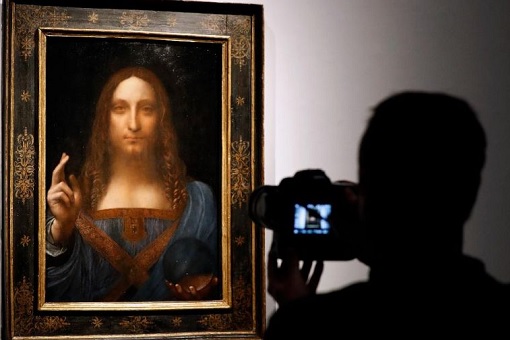
The 26-inch-tall painting, which was created at around the same time as the “Mona Lisa”, was also called the “Male Mona Lisa” by some people. Experts believe da Vinci painted it around 1500 when he was 48 years old. But what makes Salvator Mundi so valuable is that the painting has vanished for centuries, as if some time travellers had messed up with the paradoxes.
It is believed that the Salvator Mundi (“Saviour of the World”) was originally commissioned by Louis XII of France. It was also once in the collection of Charles I of England. The artwork subsequently disappeared in the late 18th century. When re-emerged at auction in 1958, it was dismissed as a copy and sold for just £45 ($60; RM248).
At £45 ($60; RM248), that would translate to about £1,600 ($2,157; RM8,815) today. A group of art dealers later bought it at an estate sale for less than US$10,000 in 2005. But that consortium of art dealers suspected they might have landed on something special, therefore, commissioned New York art expert Robert Simon to painstakingly clean the work over a 5-year time.
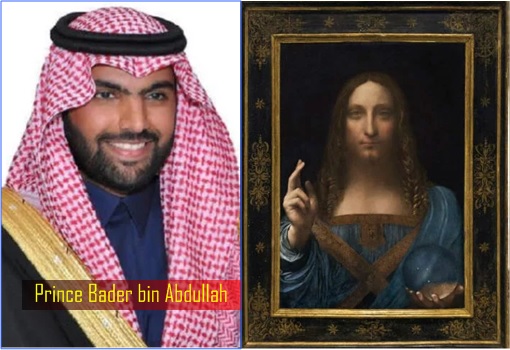
After being restored and authenticated, the masterpiece, the only Leonardo in private hands, was sold to Russian billionaire Dmitry Rybolovlev for a whopping US$127.5 million. Now, it has fallen into the hands of 32-year-old Crown Prince Mohammed bin Salman, after his proxy bought it on behalf of him.
The mystery is solved after The New York Times claimed to have seen documents linking the sale of Salvator Mundi to a low-profile Saudi prince with no record of buying major artworks. That Saudi prince – Prince Bader bin Abdullah bin Mohammed – was the winner of the auction which went under the hammer at Christie’s New York last month.
However, Prince Bader is just a proxy of MBS, as Crown Prince Mohammed bin Salman is popularly known. As confirmation, U.S. intelligence reports have identified that the Saudi prince is indeed the actual buyer of the 500-year-old painting. As it turned out, American Intelligence Community has been closely monitoring the activities of the 32-year-old prince.
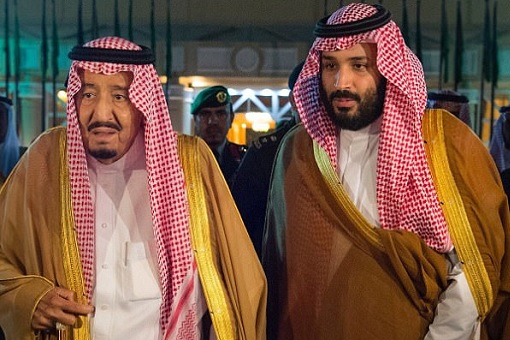
Bruce Riedel, a former CIA officer and leading expert on Saudi politics, said – “The image of the crown prince spending that much money to buy a painting when he’s supposed to be leading an anti-corruption drive is staggering,” suggesting that the U.S. isn’t convinced that their ally Saudi Arabia is serious about fighting corruption under Mohammed bin Salman.
The U.S. intelligence also revealed that while Prince Bader was named as the buyer on paper, Prince Mohammed is the ultimate customer. Apparently, Prince Bader has collaborated with MBS in the past on business ventures and charitable causes. But there’s a bigger reason why the Saudi prince splashed insane amount of money for a piece of art.
After his reckless plan to control Qatar fails spectacularly, the ambitious Saudi prince needs to save face. He needs to show Qatar that Saudi is the master in the Middle East. For more than a decade, Qatar has reigned as the Gulf region’s undisputed art power. In 2008, former Emir Sheikh Hamad Bin Khalifa Al-Thani erected a US$300 million Museum for Islamic Art.
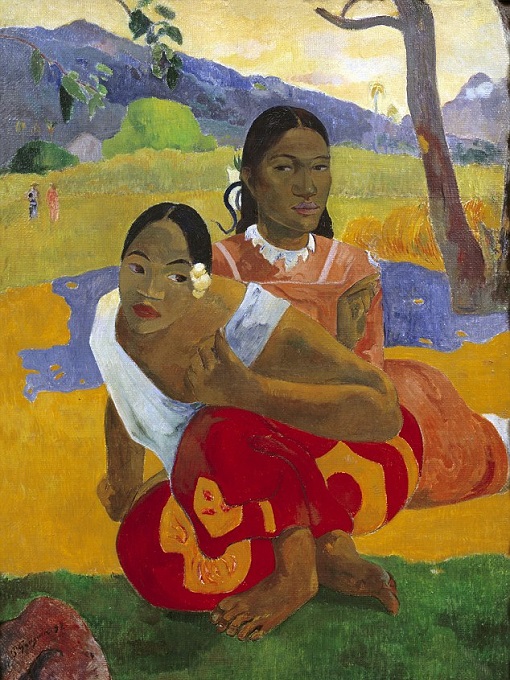
After paid a record US$259 million in 2011 for “The Card Players” by Paul Cezanne, the Qatari Emir’s daughter struck again in 2015. The Qatari princess paid top dollar for Paul Gauguin’s Tahitian scene – “When Will You Marry?” – for almost US$300 million, which stood as the most-expensive painting ever sold – until now.
Within art circles, Saudi royal family isn’t known to be art collectors. With the sudden purchase of Salvator Mundi (“Saviour of the World”), the Saudi crown prince has essentially snatched the “bragging rights” from rival Qatar, declaring that Saudi is wealthier than the tiny but gas-rich Kingdom of Qatar. But in his haste to show off his trophy, it appears Prince Mohammed might have been taken as a sucker.
A former adviser to the Qataris reportedly claimed that Sotheby’s offered the family a chance to buy the da Vinci 6 years ago for around US$80 million, but the family turned the house down. The Salvator Mundi, of course, was later sold to the Russian fertilizer billionaire Dmitry Rybolovlev, who resold it last month at Christie’s to the Saudi prince for US$450.3 million.
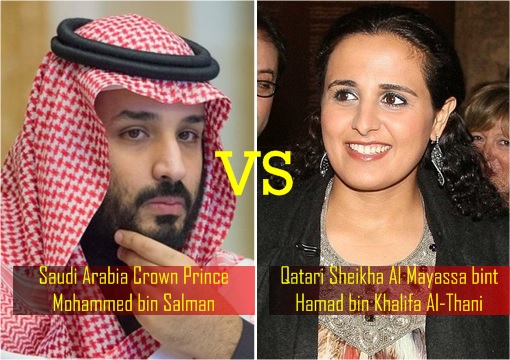
So, did MBS deliberately bid the Salvator Mundi to such ridiculous price just so it’s more expensive than what the Qatari princess possessed since 2 years ago? The answer is obvious. Still, the purchase raises question of the prince’s extravagant purchase of the da Vinci at a time of deep economic and political uncertainty in Saudi Arabia.
The purchase also doesn’t gel well with his recent anti-corruption crackdown, of which the secret reason was to replenish the kingdom’s drying coffers, and was never about putting corrupt crooks behind bars. The purge was reportedly aimed to confiscate cash and other assets worth as much as US$800 billion (£610 billion; RM3.38 trillion).
Amusingly, Saudi’s anti-corruption crackdown involves a special offer – 70% of assets in exchange for freedom – an offer that Prince Miteb bin Abdullah had taken and paid US$1 billion in corruption settlement. The next logical question is, of course, should not the favourite son of King Salman be subjected to the same investigation, if not arrest, of potential corruption?
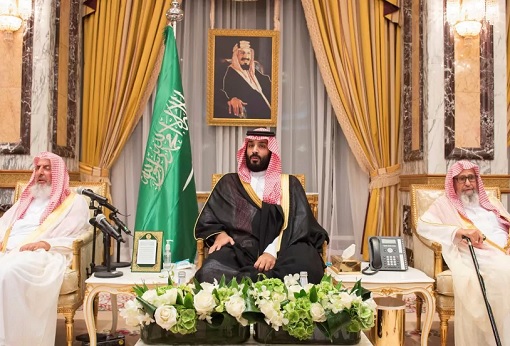
How could Saudi’s newly setup anti-corruption committee investigate their own head – Crown Prince Mohammed bin Salman – to establish the source of his money, without fear or favour, in the purchase of the US$450.3 million Salvator Mundi (“Saviour of the World”)? Obviously, they can’t because the future King of Saudi Arabia is untouchable, even if the purpose of spending half a billion is to boast.
Other Articles That May Interest You …
- Saudi Crown Prince Offers Princes: “Gimme 70% Of Your Money And You Can Walk”
- Replenish Coffers – The $800 Billion Hidden Reason Behind Saudi Corruption Crackdown
- Game Of Thrones – Crown Prince Crackdown On Princes, Alwaleed Arrested For Corruption
- If Oil Goes Above $70, The Complacent & Lazy Saudi Might Not Reform At All
- Saudi Prince Finally Admits Extremism, Promises A U-Turn Back To “Moderate” Islam
- Finally, Saudi Women Can Drive – Only Because They’re Needed To Boost Economy
- Arab VS Arab – The Hidden Reasons Why Saudi & Its Gang “Unfriend” Qatar
- The Glory Days Are Over – OPEC Warlord Saudi Has Started Borrowing

|
|
December 8th, 2017 by financetwitter
|


|

|

|

|

|

|




























Comments
Add your comment now.
Leave a Reply